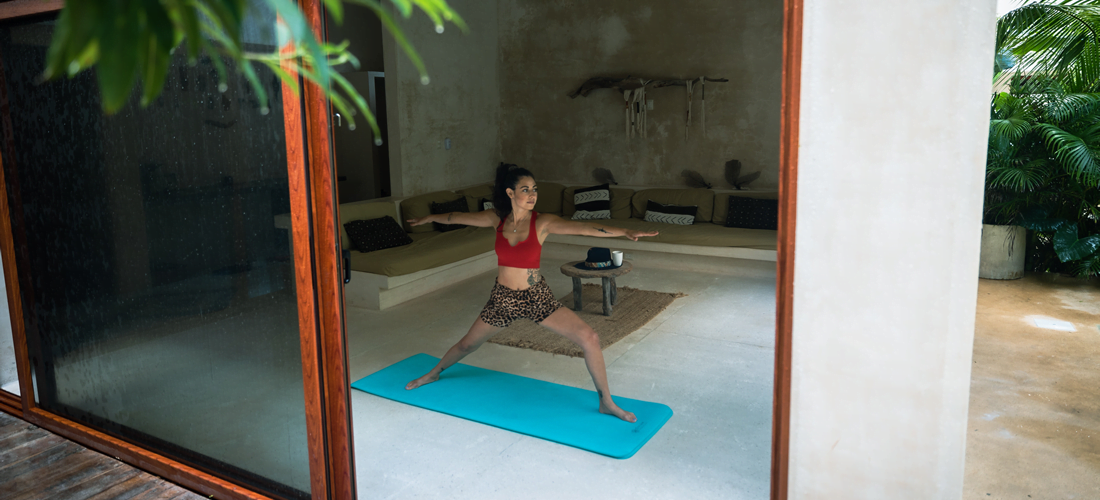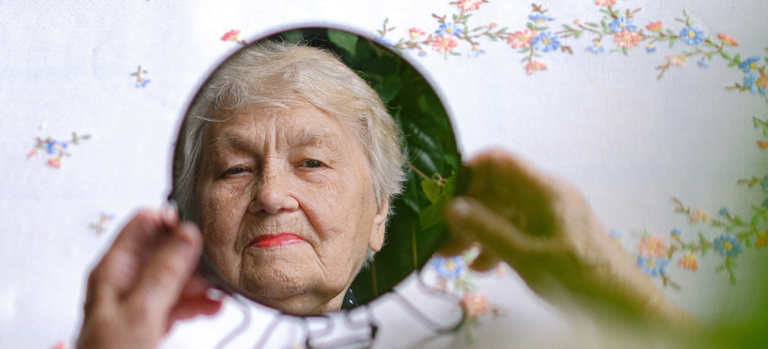Creating a sacred space at home is more than just dedicating a quiet corner for meditation or yoga. It’s about creating a sanctuary, a place where you can retreat, reflect, and recharge.
A “sacred space” is a personal area in your home that serves as a sanctuary, a place where you can retreat to for relaxation, meditation, or even just some quiet time. This space, often filled with objects that hold personal significance or create a sense of tranquility, is meant to promote inner peace and spiritual growth.
Having a sacred space at home is crucial because it provides an accessible haven for stress relief and self-reflection. It serves as a reminder to slow down, breathe, and reconnect with one’s inner self. It’s a place where you can cultivate mindfulness, focus on your mental wellbeing, and nurture your spirit.
Ideas for Creating a Sacred Space at Home
1. Define Your Purpose
Identifying Your Reasons
The first step to creating a sacred space at home is identifying your reasons for it. This is a deeply personal decision, which should align with your needs and aspirations. Perhaps you’re seeking a refuge from daily stress, a quiet spot for reflection, or a place to fuel your creativity. What matters is that it resonates with you and your intentions.
Exploring Purposes of a Sacred Space
A sacred space can serve various purposes, each catering to a different aspect of your well-being:
- Meditation: If you’re an avid meditator or want to start, a sacred space can become your personal meditation room. Filling it with elements like mats, cushions, and incense can create the right atmosphere for you to focus and attain inner peace.
- Relaxation: Your sacred space can be a cozy corner where you unwind and rejuvenate after a long day. Consider adding comfy seating, soft lighting, and relaxing scents to make this space your perfect relaxation zone.
- Creativity: If you’re seeking an inspiring spot for your artistic desires, transforming your sacred space into a creativity hub can work wonders. Surround yourself with art supplies, inspiring books, and anything that fuels your creativity.
Your sacred space should reflect your personal journey and needs. There are no rigid rules, only guiding principles to help you create an environment that encourages mindfulness, peace, and personal growth.
2. Choose the Location
Choosing the right location for your sacred space is crucial in creating an environment that truly supports your purpose. This space should be a sanctuary, a haven from the outside world and its distractions.
It’s advisable to choose a location that’s quiet and undisturbed, allowing you the solitude you need for introspection, creativity, or relaxation. The size of the space is less important than its seclusion – it could be an entire room, a small corner, or even a portable basket of items that you can set up when needed.
Ensuring that the location resonates with your intentions and evokes a sense of peace and tranquility will significantly enhance your experience in this sacred space. Remember, this is your refuge, your sacred ground. Make it special, make it yours.
Considering Essential Factors
As you select your location, some key factors to consider include privacy, natural light, and accessibility.
Privacy: To maintain the sanctity of your sacred space at home, privacy is paramount. It should be a spot where you can disconnect from the world, immerse yourself in your thoughts, meditate, or simply relax without any disruptions.
Natural Light: If possible, choose a spot with ample natural light. The sun’s rays have a calming effect, and studies show that exposure to natural light can uplift your mood, reduce stress, and even enhance your creative thinking process. However, if natural light isn’t an option, consider adding soft artificial lighting that mimics the warmth and tranquility of sunlight.
Accessibility: The location of your sacred space should be easily accessible yet distant from the high traffic areas of your home. This ensures you can access it as and when needed, while simultaneously ensuring it remains a peaceful and undisturbed refuge.
By prioritizing these factors, your sacred space will become a functional, comforting sanctuary that nurtures your physical, emotional, and spiritual wellbeing. It’s about creating a space that truly resonates with you. Remember, this is your sacred space – make it a place you love to be.
Tips for Working with Limited Space
Creating a sacred space at home doesn’t require a grand room or expansive outdoor garden. Even in a small living setup, you can carve out your personal oasis. Here are some tips to help you work with limited space:
1. Utilize Corners: If you’re short on space, consider utilizing a quiet corner of your room. A small table with your favorite artifacts, a comfortable cushion, and a low-wattage table lamp can transform an otherwise unused corner into a peaceful spot.
2. Vertical Space: Make use of vertical space by adding wall-mounted shelves or hooks. You can place your cherished items, artifacts, and books here, making your sacred space more personalized and inspirational.
3. Multipurpose Furniture: Consider furniture that serves multiple purposes. A small stool can double as a table for your meditation essentials when you’re not using it for seating.
4. Minimalist Approach: Adopt a minimalist approach to prevent your sacred space from feeling cluttered. Remember, less is more. Keep only those items that genuinely enhance your spiritual journey and bring you peace.
5. Portable Sacred Space: If space is really tight, consider a portable sacred space. A small basket or box that houses your essential items can be moved and set up wherever and whenever you need it.
Creating a sacred space at home is not about the size of the space, but about the intention and energy you bring into it. Each sacred space is unique, reflecting the spirit and style of the individual who creates it.
3. Clearing and Cleansing
Before setting up your sacred space, it’s crucial to perform an energetic cleansing. This process is vital as it helps to remove any negative energies or vibrations that may have accumulated in the area. Just as we physically clean our homes, energetically cleansing the space ensures a fresh and positive atmosphere.
Whether you use sage, incense, sound, or intention-focused visualization, clearing the energy will create a more inviting and peaceful environment. This purified area will then be more conductive to meditation, reflection, or any spiritual practice you wish to undertake in your sacred space. In essence, energetic cleansing helps to establish a clean slate, enabling the space to be filled with your intentions, hopes, and positivity.
Methods for clearing negative energy
Smudging
Smudging is an ancient practice used by many cultures worldwide. Typically, this method involves burning herbs like sage, cedar, or sweetgrass and fanning the smoke around the space you wish to cleanse. The smoke is believed to purify the area and banish negative energies.
Using Crystals
Crystals are powerful tools for energy work. Different crystals have various properties, but many are used for their purifying and protective qualities. To cleanse a space with crystals, you can place them around the room or use a crystal wand to direct energy.
Sound Cleansing
Sound is a potent tool for shifting energy. Tibetan singing bowls, bells, or tuning forks are often used for this purpose. The vibrations from these tools are thought to break up stagnant energy and promote a free flow of positive energy.
Salt
Salt is another traditional purifying substance. You can sprinkle sea salt or Himalayan salt around the room, or place salt bowls in corners to absorb negative energies.
Essential Oils
Essential oils can also be used to clear negative energy. Sage, frankincense, and lavender are popular choices. You can diffuse these oils in your space, or mix them with water and spritz them around the room.
Creating a sacred space at home isn’t just about the physical environment—it’s also about the energy. These methods, used individually or in combination, can help ensure your space is a tranquil and positive sanctuary, conducive to introspection and spiritual growth.
Physical Cleaning and Decluttering
Physical cleaning and decluttering may seem like mundane tasks, but they play an integral role in creating a sacred space at home. Physical clutter can lead to mental clutter, obstructing the free flow of energy and hampering your ability to focus and relax.
Start by getting rid of any items that do not serve a purpose or bring joy into your life. Implement organizational systems that make it easy to keep your space tidy and functional. Regular physical cleaning is equally important. A clean space is more inviting and easier to maintain, promotes better health, and is less likely to distract or cause stress.
By intentionally keeping your space clean and clutter-free, you cultivate an environment that supports tranquility and mindfulness.
4. Personalizing Your Sacred Space
Selecting Meaningful Decorations and Items
When creating a sacred space at home, infusing personal touches in the form of meaningful decorations and items is essential. These could be cherished mementos, inspirational artworks, or symbols that resonate with your spiritual practice. Incorporating these items imbues your space with a sense of personal significance and can serve as reminders of your intentions and goals.
The Use of Color and Lighting
Color and lighting are also crucial components of your sacred space. Colors can have a profound impact on our mood and energy. Choose a color palette that aligns with the emotions and intentions you want to foster in your space—soft pastels for serenity, vibrant hues for creativity, or earthy tones for grounding.
Lighting, too, sets the ambiance. Natural light invigorates and inspires. If natural sunlight is not readily available, consider alternatives like candles or fairy lights for a warm, gentle glow. Adjustable lamps can provide the flexibility to alter the brightness as per your needs.
Incorporating Elements from Your Spiritual or Personal Beliefs
Your sacred space should serve as a physical manifestation of your spiritual or personal beliefs. This could mean placing religious icons, crystals, tarot cards, or even personal journals and books in your space. If you find peace in nature, incorporate plants or other natural elements. If you align with a specific philosophy or cultural practice, infuse relevant symbols or artifacts. The key is to create an environment that reflects your inner self and supports your spiritual journey.
5. Creating a Comfortable Atmosphere
Choosing Comfortable Seating and Flooring
Creating a sacred space at home involves picking comfortable seating and flooring that aids relaxation and contemplation. The seating could include a plush armchair, a yoga mat, or even a meditation cushion—essentially, anything that supports the activities you plan to do in this space. Additionally, the flooring, whether it’s a soft rug or polished wood, should add to the overall comfort and aesthetics of your sacred spot.
Adding Soft Furnishings
Soft furnishings, like cushions, pillows, and blankets, can enhance the coziness of your sacred space. These items add an element of tactile comfort, allowing you to feel physically relaxed and at ease as you engage with your spiritual practice. Additionally, these furnishings can be selected to complement the color scheme of your space, adding visual harmony.
Using Scents and Sounds to Enhance the Atmosphere
The addition of soothing scents and sounds can elevate the ambiance of your sacred space. Consider using incense, essential oils, or scented candles to fill your space with calming aromas. Fragrances such as lavender or sandalwood have been known for their stress-reducing properties. Complement this with calming background music, nature sounds, or the soft chiming of wind chimes to create a multisensory experience that aids in relaxation and focus.
6. Setting Intention
The Importance of Setting an Intention
Setting an intention for your sacred space is a crucial step in its creation. Much like a compass guiding a ship, your intention will guide your interactions within this space and frame your mindset. Whether you wish to use the area for meditation, yoga, reading, prayer, or simply a place of quiet reflection, your intention will help shape the physical setup and the kind of energy it embodies.
Intention brings about a level of mindfulness, adding depth to your practice and making your sacred space a true reflection of your inner self. Remember, the power in a sacred space lies not just in its physical components, but in the purpose and intention it holds for you.
Examples of Intentions
- Peace: If your intention is peace, your sacred space might incorporate elements that bring tranquility and calmness. Perhaps include a Zen sand garden, or hang a symbol of peace, such as a dove or an olive branch.
- Healing: If your focus is on healing, whether physical, emotional, or spiritual, your sacred space could feature objects that symbolize or promote healing. This could be crystals known for their healing properties, like amethyst or clear quartz, or image of a deity or saint associated with healing.
- Creativity: For those seeking to inspire creativity, decorate your sacred space with vibrant colors, interesting textures, and items that stimulate your senses and get the creative juices flowing. This could be a notepad and pen for jotting down thoughts, a sketchpad for doodling, or even a musical instrument.
- Mindfulness: If your intention is mindfulness, the focus should be on elements that help anchor you in the present moment. This might entail having a comfortable meditation cushion, a mindfulness bell, or perhaps a simple vase of fresh flowers to captivate your attention.
- Gratitude: If gratitude is your intention, consider having a gratitude jar where you can drop in notes of things you’re grateful for. Surround yourself with photos or items that remind you of your blessings.
- Love and Compassion: If your intention is to cultivate love and compassion, fill your sacred space with symbols of love. Heart-shaped objects, photos of loved ones, or an image of a deity associated with love can create a space that resonates with this intention.
There’s no right or wrong when it comes to setting an intention for your sacred space at home. It’s all about what resonates with you and aids in your personal growth and spiritual journey.
Rituals for Intention-Setting
A crucial aspect of creating a sacred space at home is performing rituals that reinforce your intentions. These ceremonies can be as simple or elaborate as you choose, but it’s their regular practice that truly infuses your sacred space with purpose and meaning.
- Candle Lighting: Lighting a candle symbolizes the illumination of your intentions. As you light the candle, vocalize or mentally affirm what you aim to manifest. This simple act can serve as a powerful reminder of your intentions every time you enter your sacred space.
- Sage Smudging: This ancient ritual involves burning sage to cleanse your sacred space of any negative energies. As the smoke wafts around your space, visualize it carrying away any obstacles to achieving your intentions.
- Mindful Meditation: Spend a few moments each day in mindful meditation, focusing on your breath and your intentions. Visualize your intentions being actualized in your life. This ritual can help anchor your intentions in your consciousness and can be a serene way to begin or end your day.
The potency of these rituals lies in their consistent practice. As you engage in these rituals, you anchor your intentions more deeply, infusing your sacred space with your unique energy and purpose.
7. Maintaining Your Sacred Space
Tips for Regular Cleaning and Upkeep
Just as you maintain the energy in your sacred space through regular rituals, physical cleanliness and upkeep also play a key role in preserving its sanctity. Here are some tips for regular cleaning and upkeep:
- Regular Dusting: Dust and grime can accumulate over time, which can affect the energy of your space. Regular dusting keeps your sacred space clean and allows the energy to flow freely.
- Organizing Your Space: Keep your sacred items, such as crystals, tarot decks, or religious texts, organized. When everything has its place, it’s easier to focus on your intentions.
- Refreshing Flowers and Plants: If you have plants or flowers in your sacred space, make sure they’re well maintained. Replace wilted flowers and water your plants regularly. They not only beautify your space, but also contribute to a positive energy flow.
- Natural Cleaning Products: Since your sacred space is a place of peace and positivity, consider using natural cleaning products whenever possible. Harsh chemicals can disrupt the energy balance.
- Periodic Deep Cleaning: In addition to regular cleaning, schedule deep cleaning sessions periodically. This could include washing any fabric items like meditation cushions or rugs, and thoroughly cleansing any crystals or other sacred items.
These maintenance practices help ensure that your sacred space remains a sanctuary for your spiritual journey. Remember, a well-tended sacred space mirrors a well-tended soul.
How to Protect the Energy and Ambiance of Your Space
Preserving the energy and ambiance of your sacred space is as important as its physical upkeep. Here are some ways to safeguard the serenity of your space:
- Setting Boundaries: Make your sacred space a no-distraction zone. By keeping electronic devices, work materials, or anything that can cause stress out of the space, you ensure it remains a place of peace and tranquility.
- Sage Smudging: This age-old practice is believed to clear negative energy. Light a sage bundle and let the smoke waft around your space to cleanse it. Remember to open a window or door for the negative energy to exit.
- Sound Healing: Using sound is another method to cleanse the energy. Instruments like singing bowls, bells, or chimes can be used. The vibration from the sounds helps create a peaceful ambiance.
- Crystals: Certain crystals are said to absorb negative energy and promote positive vibes. Placing crystals like black tourmaline, amethyst, or selenite in your space can help maintain a balanced energy.
- Intention Setting: Regularly set and reaffirm your intentions for the space. This can be in the form of prayer, meditation, or simply stating your purpose.
By incorporating these practices, you can protect and enhance the energy and ambiance of your sacred space. Always remember, this space is a reflection of your inner peace and spiritual growth.
The Role of Daily or Periodic Rituals
Daily or periodic rituals play a vital role in creating and maintaining your sacred space at home. These rituals provide constancy and rhythm, helping to anchor your intention for the space and maintain its serenity. Performing rituals such as lighting candles, incense burning, or simply taking a few moments to breathe deeply and center your thoughts can enhance the spiritual connection with your space.
These rituals don’t have to be complex or time-consuming; even the simplest acts, done with intention, can have a profound impact. A ritual could be as uncomplicated as watering a plant or repositioning an object. The key is consistency. The more frequently and regularly you engage in these rituals, the more your sacred space will resonate with positive energy and serve as an authentic reflection of your inner peace.
8. Incorporating Practices
Ideas for Using Your Sacred Space
The primary purpose of creating a sacred space at home is to provide a haven where you can engage in practices that instill calm, peace, and inner growth. Here are some ideas on how you can utilize your sacred space:
- Meditation: This is one of the most common uses for a sacred space. Regular meditation can dramatically improve mental clarity and reduce stress levels. Your sacred space provides the perfect quiet and serene environment to focus and reflect.
- Yoga: The tranquility of a sacred space makes it an ideal spot for yoga practices. Stretching your body in a peaceful setting can help in releasing tension and promoting physical wellness.
- Prayer: If you follow a particular faith, your sacred space can serve as a personal shrine where you can offer prayers, reflect on scripture, or engage in other religious practices.
- Journaling: Writing down your thoughts, feelings, and experiences can be a therapeutic process. The calm atmosphere of a sacred space can inspire introspective journaling sessions.
- Reading: Delve into spiritual or self-improvement literature in your sacred space. Reading in a quiet, dedicated space can enhance your comprehension and enjoyment of the material.
The purpose of creating a sacred space is to support whatever practices help you feel calm, centered, and connected. Choose the activities that resonate with you and contribute to your personal growth and spiritual journey.
How to Make Your Sacred Space a Part of Your Daily Routine
Making your sacred space a part of your daily routine can significantly enhance your overall wellbeing. Here are some ways to do so:
Consistent Timing: Choose a time each day for visiting your sacred space. This could be first thing in the morning to start your day on a positive note, or last thing at night to wind down and reflect. Over time, this consistent timing becomes a habit.
Integrate with Existing Habits: Pair your sacred space with an existing habit. You might visit your sacred space after brushing your teeth in the morning, or before you start preparing dinner in the evening. This pairing makes it easier to establish your sacred space as a part of your daily routine.
Create Rituals: Creating simple rituals can make your time in the sacred space more meaningful. This could be lighting a candle, playing soft music, or preparing a cup of tea. These rituals signal to your brain that it’s time to transition into a calm and focused state.
Keep it Simple: Don’t overcomplicate things by trying to cram too many activities into your sacred space time. Starting with just 5 to 10 minutes a day can be effective. You can gradually increase this time as you get more comfortable.
Be Flexible: Understand that some days, life will get in the way and you may not have as much time for your sacred space. That’s okay. Even a few minutes spent in your sacred space can make a big difference.
By incorporating these practices, you can make your sacred space a fundamental component of your daily routine, and in turn, cultivate a lifestyle that prioritizes calmness, mindfulness, and personal growth.
Staying Motivated and Committed to Your Practice
Staying committed and motivated to maintain your sacred space at home requires a clear understanding of why you created it in the first place. Remind yourself of the peace, serenity, and clarity this space provides, particularly on days where you’re feeling overwhelmed or distracted.
Set Intentions: Each time you visit your sacred space, set an intention for that session. This intention could be as simple as “I will feel more relaxed after this” or as specific as “I will gain clarity about a particular issue.” Intentions give your practice purpose and meaning, which can strengthen your commitment.
Track Your Progress: Keep a journal of your experiences in your sacred space. Note the positive changes, breakthroughs, and challenges as they occur. Reviewing this journal can provide motivation, especially on days when your dedication wavers.
Be Patient with Yourself: Understand that it’s natural to have ups and downs in any practice. Don’t beat yourself up if you miss a day or two. Instead, gently guide yourself back to your space without judgment.
Remember, the goal of creating a sacred space at home is to enhance your wellbeing. It’s not a task to be checked off, but a nurturing routine to be savored. Stay open and receptive, and allow your sacred space to evolve with you.
9. Personal Growth and Reflection
Creating a sacred space at home can propel profound personal growth and reflection. This dedicated area serves as a sanctuary where you can disconnect from external demands and distractions, allowing for introspection and self-understanding. Over time, the consistent use of this space can foster increased self-awareness and emotional intelligence.
The sacred space also plays a pivotal role in stress management. It offers a refuge where you can practice mindfulness, meditation, yoga, or any other relaxation techniques that resonate with you. These practices can lower stress levels, improve mental clarity, and enhance your overall mood.
On a deeper level, engaging with your sacred space can facilitate spiritual growth. Whether you’re meditating, praying, or simply sitting in silence, you’re connecting with your inner self, exploring your beliefs, and cultivating a sense of peace and spiritual fulfillment.
In essence, creating and maintaining a sacred space at home paves the way for a journey of self-discovery and personal growth. It’s a gentle reminder to pause, breathe, and reconnect with yourself amidst the hustle and bustle of daily life.
Closing Thoughts on Creating a Sacred Space at Home
Creating a sacred space at home is a transformative practice that nurtures your wellbeing on multiple levels. This special place serves to foster personal growth, reflection, stress management, and spiritual development. It’s a sanctuary that allows you to disconnect from external distractions and connect deeply with your inner self.
The power of this sacred space lies not in its physical elements but in the intention behind its creation and its consistent use. So, why wait? Start exploring your own personal sacred space, designed with love and intentionality.
Remember, this is your journey of self-discovery and every step you take towards creating this sacred space is a step towards embracing a more harmonious, mindful, and spiritually rich life.








